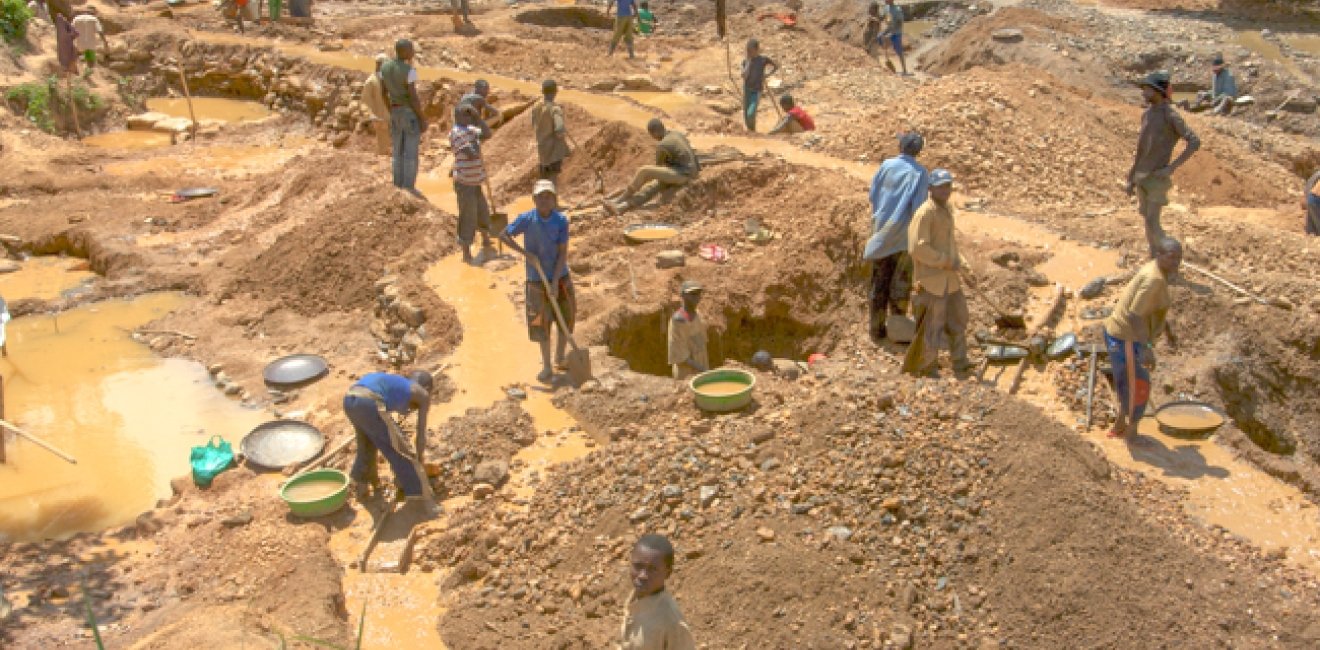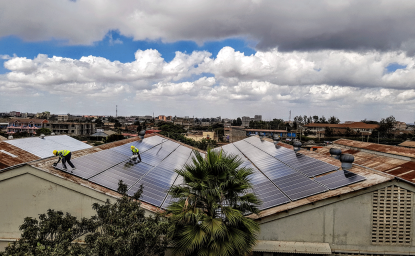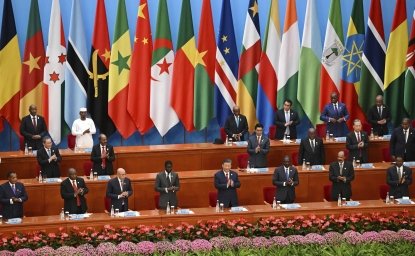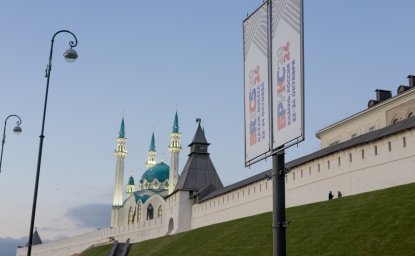
A blog of the Africa Program
[caption id="attachment_10916" align="aligncenter" width="600"] Miners in the Democratic Republic of Congo, some as young as 11. Photo by Enough Project via Flickr. Creative Commons.[/caption]
Mining is one of the most hazardous forms of child labor. It is physically dangerous and strenuous, exposes children to unstable underground heavy equipment and structures, toxic and explosive chemicals, and heat. The dangers to health and safety make it unfit for children under any circumstances.
Precious minerals such as gold and diamonds top the list of minerals mined by about one million children in Africa between the ages of 5 and 17 for less than $2 per day. In cases where they are not paid, children receive only food as payment for a day's work.
Human Rights Watch revealed in a report that about 12,000 children, some as young as 8, are working in artisanal and small-scale gold mines in Tanzania, while in Ghana thousands of children between the ages of 12 and 17, and some as young as 9, continue to work in hazardous conditions in unlicensed gold mines. In Mali and Burkina Faso, children represent between 30 to 50 percent of the small scale mining workforce and work between 12 to 15 hours a day in the artisanal gold mining sector. New developments have also pointed to the fact that children miners may be involved in mining conflict minerals. A 2016 report by Amnesty International shows that children are at the heart of the supply of conflict minerals used in many electronics. In the Democratic Republic of Congo, cobalt mined by child laborers has been traced to the supply chains of major tech companies like Apple, Samsung, Microsoft, and some manufacturers like Volkswagen. In the Central African Republic, children as young as 11 work alongside adults in the blood diamond trade.
Due to the unregulated and illegal nature of most artisanal mining activities, as well as the absence of protective structures, children are exposed to illnesses, injuries, and even death from falling rocks and pit collapses, sharp objects, and mercury poisoning. Girls, are exposed to sexual harassment and the pressure to engage in the sex trade, which also exposes them to sexually transmitted diseases and unwanted pregnancies.
Most child miners are not enrolled in schools and work in the mines all year round, missing out on education, important life skills, and other job options in the future. Child miners who are enrolled in school often work 10 to 12 hours during the weekends and school holidays, and sometimes before and after school hours. As a result, they often struggle to keep up with school work. In Tanzania for instance teachers in mining communities constantly report low attendance levels in their schools. Similarly, in Ghana, about 35 percent of child miners do not go to school, while 32 percent do not attend regularly.
A Violation of Rights
These facts are a reminder that mining is an infringement on the rights of children to education, health, security, and protection from violence and abuse. Various international human rights treaties guarantee that children have the right to their physical and personal integrity and are entitled to be protected from all forms of violence in all aspects of their lives. The International Labor Organization's Convention 182 on the Worst Forms of Child Labour (1999) and the accompanying Recommendation 190 called for the prohibition and elimination of the employment of children in mines and quarries across the world; Article 32 of UNICEF's Convention on the Rights of the Child states that every child has the right to be protected from work that threatens his or her health, education, or development; and the African Charter on the Rights and Welfare of the Child focuses on children's rights in Africa.
Under these and other international and domestic laws and treaties, African governments are obligated to protect and uphold the rights of their children, which includes protecting them from the worst forms of child labor such as working in hazardous conditions. In addition to the treaties above, the Convention on the Rights of the Child and the African Charter also presented opportunities for African governments to establish the right policies and regulatory frameworks to ensure the rights of all children are respected and promoted. But how have African governments tackled the problem?
Ghana passed the Children's Act in 1998 to protect and improve the welfare of children. Under Section 91 of the act, labor is exploitative of a child if it deprives him or her of education, health, or development. The minimum age for a person to work in hazardous places is 18 years. Yet the act does not include a detailed procedure for implementation, and indeed the Ministry of Gender, Children and Social Protection has provided weak oversight and a lack of proper enforcement.
Likewise, in Tanzania, Section 82 of the Law of the Child Act of 2009 recognizes working in mines and quarries as hazardous, and hence it is unlawful to employ or engage children in such work. The fact that about 12,000 Tanzanian children are still engaged in mining means that implementation and enforcement of the act is an "ongoing struggle" with the government. Similarly, the DRC has made little advancement in its efforts to reducing child labor used in mining, even after adopting a National Action Plan and a Committee to Combat the Worst Forms of Child Labour in 2006. The DRC's Labour Code of 2002 defines penalties for companies employing children in hazardous work, while the Ministerial Order No. 12 of 2008 establishes 18 as the minimum age for hazardous work. The labor code, however, only applies to children working for an employer, which means the many self-employed children are not protected and are vulnerable to labor abuses.
Given the limited enforcement of laws governing child labor in mines, many suppliers, traders, and international companies buying minerals from Africa have done little to disentangle themselves from the exploits of child labor. Although companies have made efforts to comply with the OECD Due Diligence Guidance on ensuring conflict-free mineral supply chains, the fact remains that children's rights in Africa, especially children engaged in mining, are poorly protected.
The Way Forward
The way forward should start with the formalization of artisanal mining activities. Formalization is when a government brings the artisanal mining sector under an appropriate legal and policy framework, which, among other things, prohibits children, adolescents, and all forms of informal employment in the sector. The legal framework should also include child labor monitoring systems developed and implemented at the district and community levels.
Governments, with the support of the private sector, need to increase access to and support for preschool and primary education, especially in mining communities. Opportunities for vocational and skills training, as well as apprenticeship programs, should be easily available and accessible to children and youth from mining areas. This support should extend to children who are unable to continue to secondary schools due to their inability to pay school fees.
At the community level, parents who engage their children in mining must be sensitized to the potential hazards of mining on children, such as the health impact of mercury exposure. In Nigeria, for instance, the Ministry of Mines has a dedicated artisanal mining department that conducts sensitization programs for women in particular on the dangers of involving their children in mining. It includes billboards, radio jingles, and drama presentations in communities and villages. This program is worth emulating in other countries.
Moreover, since child miners supplement their family's income, strategies and programs seeking to eliminate child labor in mines should provide sustainable alternative livelihood opportunities to parents. For example, this can include entrepreneurship training on small start-up businesses of their choice and the provision of funds and easy access to credit, for parents to sustainably support their families and young ones.
Since Western countries are the destinations of most minerals mined in Africa, international companies who source such minerals must initiate programs discouraging child labor and removing children from the supply chain. Companies can do this by meaningfully engaging with their suppliers on a well-defined timeframe to demand an end to the use of children in mining, and by ceasing to source minerals from suppliers who fail to comply with the due diligence procedures within the given timeframe.
International donors, civil society groups, NGOs, and advocacy groups should demand implementation, support, and provide assistance to African governments by developing a comprehensive strategy on monitoring and strengthening initiatives and laws targeted at child labor in mining.
_
Childhood is a critical time for healthy physical, cognitive, and behavioral growth and development. If African children are to develop into adults with the capacity to drive Africa's transformation and to escape the cycle of poverty, then the elimination of child labor in mining is even more urgent.
Maame Esi Eshun is a Southern Voices Network Scholar at the Wilson Center from May to July 2016. She is a Research Associate at the African Center for Economic Transformation (ACET), a member organization of the Southern Voices Network.
Author

Regulatory Research Analyst at the Public Utilities Regulatory Commission, Ghana

Africa Program
The Africa Program works to address the most critical issues facing Africa and US-Africa relations, build mutually beneficial US-Africa relations, and enhance knowledge and understanding about Africa in the United States. The Program achieves its mission through in-depth research and analyses, public discussion, working groups, and briefings that bring together policymakers, practitioners, and subject matter experts to analyze and offer practical options for tackling key challenges in Africa and in US-Africa relations. Read more





